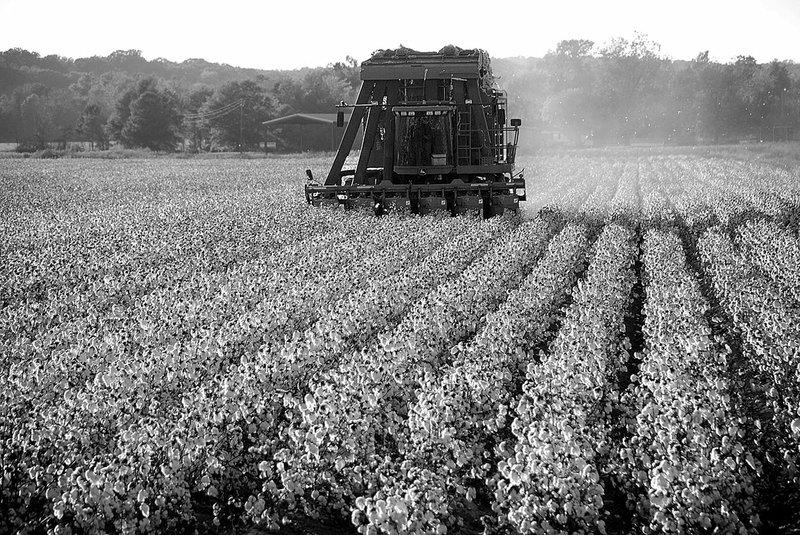Dear Otus,
As a public service, I wish you'd spread the word about the coming s'more crisis caused by the excessive rains in North Carolina and Georgia, and the late cold snap in Arkansas.
I'm a fourth generation marshmallow farmer here in Lonoke County and it breaks my heart to think of all the little campers who'll be disappointed this summer when s'mores (and that's the correct spelling) are not available around the fire.
-- Alex Doumak,
Keo
Dear Alex,
It was wholly a pleasure to hear from you and to let you know that I feel your pain and am sorry for the low crop yield this spring -- or what has passed for spring so far.
I agree. Due to the coming shortage, the cost of s'more marshmallows this summer is going to be prohibitive for the majority of American consumers. In addition, the Trump administration's confiscatory tariff on the importation of raw marshmallow base rules out any relief for at least the next year.
I'd be delighted to sound the warning, especially because a recent survey revealed that few Arkansans are aware of the importance of the Natural State in the production of marshmallows.
Indeed, few have suspected that the gleaming white fields in late spring are even marshmallow blossoms. Most mistake them for cotton bolls because of the resemblance, until close inspection.
Cotton is in the same monophyletic group, of the genus Gossypium in the mallow family Malvaceae, but cotton is far more fibrous.
Marshmallow (Althaea officinalis) is rotated in fields with the later-blooming edamame (Glycine max) and typically yields 1,075 pounds per acre, according to the 2017 Arkansas Crop Production Annual Summary.
Arkansas ranks fourth in domestic marshmallow production behind only North Carolina, Georgia and Mississippi. Heavy rains in the top two states and late winter weather in Arkansas have devastated this year's crop, according to the National Marshmallow Council of America (complete report at marshmallow.org).
And unlike the state's many organic Velcro farms that have been bought up by large national conglomerates, Arkansas' marshmallow farms remain largely family affairs with an average cultivation of 322 acres.
And, yes, it is s'mores and not smores. S'more is a contraction of "some more," which is what young campers ask for after having tasted their first delectable confection.
The earliest recipe for "Graham Cracker Sandwiches" was published by the Campfire Marshmallow Co. of Milwaukee in 1924. In 1927, a recipe for "Some Mores" was published in Tramping and Trailing with the Girl Scouts, and in the 1938 edition, the term was shortened to s'mores. The name was further popularized in 1957 by the famous Betty Crocker Cookbook.
According to the cookbook, a s'more is "a still-warm, fire-roasted marshmallow pressed between two layers of thin chocolate, sandwiched between two pieces of graham cracker."
The concoction has delighted generations, but marshmallows have delighted old and young alike for millennia.
Around 2000 B.C., the fellahin of ancient Egypt discovered a wild herb growing in the papyrus sedge marshland near Bubastis from which a sweet substance could be extracted. They combined the sap of the marshmallow plant with honey to create a thick spread reserved only for the pharaohs.
By the 1800s, confectioners in France learned how to hand whisk marshmallow base with egg whites and sugar. They created the first modern marshmallows we know today. Cornstarch molds were used to form them into cubes.
We can also credit Campfire Marshmallows in 1948 for patenting the modern extrusion process. That revolutionized production by pressing the cooked base through cylindrical tubes, then cutting into equal pieces for packaging.
The new process allowed marshmallows to be inexpensively produced and they became an everyday treat and a staple for favorite family recipes -- and s'mores.
Last year, a 20-ounce bag of marshmallows sold for under $2. This year, the shortage has the cost expected to skyrocket to four times that amount. Many will simply do without. And that includes the makers of the mini marshmallows popular in hot chocolate, Rice Krispie treats, marshmallow fondant and mini fluffernutter brownie cups and, of course, Peeps.
Until next time, Kalaka reminds you that National S'mores Day is celebrated Aug. 10. It'll be a sad celebration around the campfire this year.
Disclaimer
Fayetteville-born Otus the Head Cat's award-winning column of
Z humorous fabrication X
appears every Saturday. Email:
mstorey@arkansasonline.com

Disclaimer: Fayetteville-born Otus the Head Cat's award-winning column of 👉 humorous fabrication 👈 appears every Saturday.
HomeStyle on 04/28/2018
